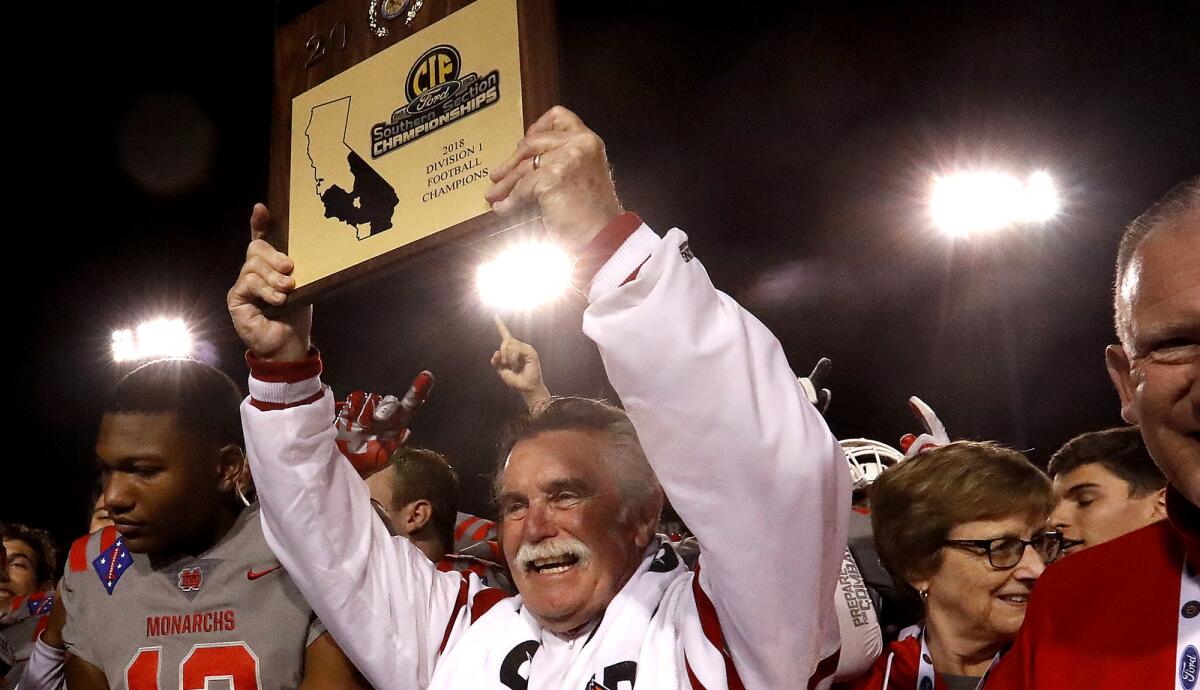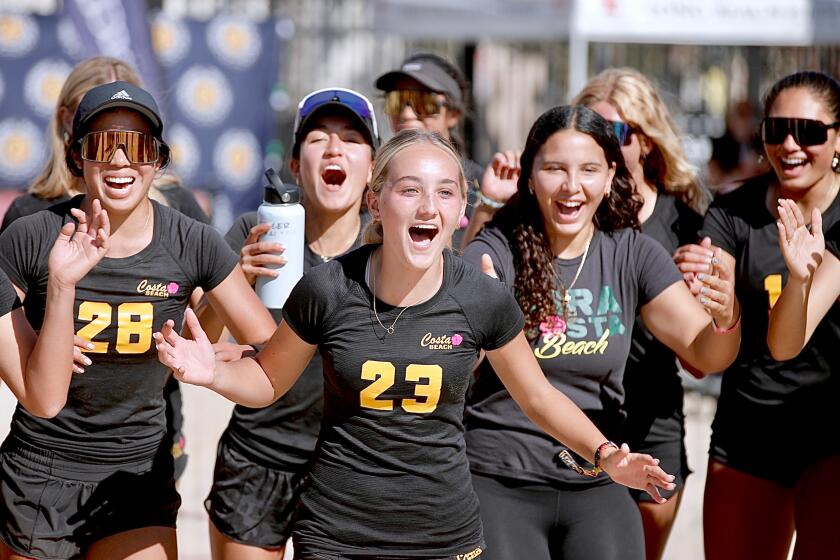Column: Private school domination in football becoming a public concern

- Share via
Welcome to the era of private school domination in high school sports. The question is how long public school supporters are going to be able to bite their tongues while waiting to see if this is merely a cycle or a systematic change.
The CIF Open Division state championship football bowl game matching Concord De La Salle against Santa Ana Mater Dei in an 8 p.m. clash Saturday at Cerritos College marks the first time in the 13-year history of the bowl series that the upper division final will have been limited to private schools for three consecutive seasons.
“Probably, in this day and age, the way things are going, it’s going to stay awhile,” Corona Centennial coach Matt Logan said.
It might be hard to believe but when the bowl series was created, public schools made the championship game for the first four years, with Canyon Country Canyon stunning De La Salle 27-13 in the inaugural Division I championship game in 2006. Centennial made it in 2007.
The only time two public schools faced off in the Open Division final was 2008: Sacramento Grant vs. Long Beach Poly. Then Crenshaw, led by De’Anthony Thomas, made it from the City Section in 2009.
What’s happened over the last 10 years in Southern California is pretty clear: Top players are being lured from public schools to private schools with promises of financial aid, transportation help and better college scholarship opportunities.
Public schools still have free tuition, free books and the advantage of being in the neighborhood, but Uber, van pools and Metro link trains have made it possible to live far away from a school but still attend it. By making it easier to transfer, the California Interscholastic Federation has made it possible for certain schools to avoid rebuilding years, because all they need to do is replace graduating seniors with a few transfer students.
“Can the most talented public school compete with the most talented private school? Yes but it is going to be the exception and the gap will spread wider,” said former Canyon coach Harry Welch.
So here we are with little sign of any changes taking place. There are 1,202 public schools and 404 private schools in the CIF. It’s an insider’s game being played, and public schools have been caught off guard.
The CIF’s solution is to keep adding playoff divisions so public schools get to compete for a championship, just not at the highest level. It’s called competitive equity. In this year’s bowl games, out of 49 schools competing, 13 are private schools.
“It’s giving our schools a chance to compete,” said Roger Blake, the CIF’s executive director.
In Northern California, the competition is for second place. De La Salle has won 27 consecutive North Coast Section football championships and hasn’t lost to an NCS school since 1991 — a string of 298 consecutive victories. Does Southern California want a similar fate?
Some people want to separate public and private schools during playoff competition. It’s done in several states. But Logan, who has put together one of the few public school programs at Centennial that can successfully compete against the best, said he would oppose that idea.
“I get it,” he said. “At the same time, as a competitor, you want to play the best. We’ve worked our way up and are proud to compete but want to have the ability to compete.”
The Open Division championship game on Saturday will feature plenty of future college standouts. It’s clearly the No. 1 team in Southern California going against the No. 1 team in Northern California. Celebrate the idea of best going against best.
Behind the scenes, though, understand it is nowhere near an even playing field at the highest level of high school sports in California.
Twitter: @latsondheimer
More to Read
Get our high school sports newsletter
Prep Rally is devoted to the SoCal high school sports experience, bringing you scores, stories and a behind-the-scenes look at what makes prep sports so popular.
You may occasionally receive promotional content from the Los Angeles Times.







